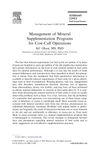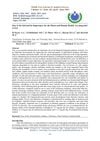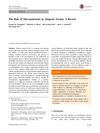TLDR Children with autism have lower levels of essential and toxic trace elements in their hair.
The study investigated hair trace elements in 74 children with autism spectrum disorder (ASD) compared to 74 sex- and age-matched controls. It was found that ASD children had significantly lower levels of chromium, iodine, vanadium, beryllium, and tin in their hair, while selenium levels were higher. Younger ASD children (2-4 years) showed even greater deficiencies in chromium, iodine, vanadium, arsenic, boron, and beryllium. Older ASD children (5-9 years) had increased selenium levels and a nearly significant decrease in lead. No significant differences were found in mercury, zinc, and copper levels. The study concluded that children with ASD generally had lower levels of both essential and toxic trace elements in their hair.
21 citations
,
April 2009 in “Trace Elements and Electrolytes” Autistic children have lower iron and higher selenium in their hair.
 January 2022 in “Bio web of conferences/BIO web of conferences”
January 2022 in “Bio web of conferences/BIO web of conferences” The conclusion is that normal trace element levels in newborn calves' hair are between the 25th and 75th percentiles, and levels outside this may indicate diselementosis.
 16 citations
,
March 2007 in “The Veterinary clinics of North America. Food animal practice”
16 citations
,
March 2007 in “The Veterinary clinics of North America. Food animal practice” Proper mineral supplementation in cow-calf operations prevents health issues and economic losses.
 January 2021 in “Middle East journal of applied sciences”
January 2021 in “Middle East journal of applied sciences” Zinc is essential for plant growth and human health, but many soils lack enough zinc, affecting crops and potentially leading to health problems.
 63 citations
,
May 2017 in “American Journal of Clinical Dermatology”
63 citations
,
May 2017 in “American Journal of Clinical Dermatology” People with alopecia areata often have lower levels of vitamin D, zinc, and folate, but more research is needed to understand if supplements can help treat it.
 10 citations
,
July 2018 in “Our Dermatology Online”
10 citations
,
July 2018 in “Our Dermatology Online” Some vitamins and minerals are important for preventing hair loss, but treating hair loss with them without a known deficiency is not proven effective.






